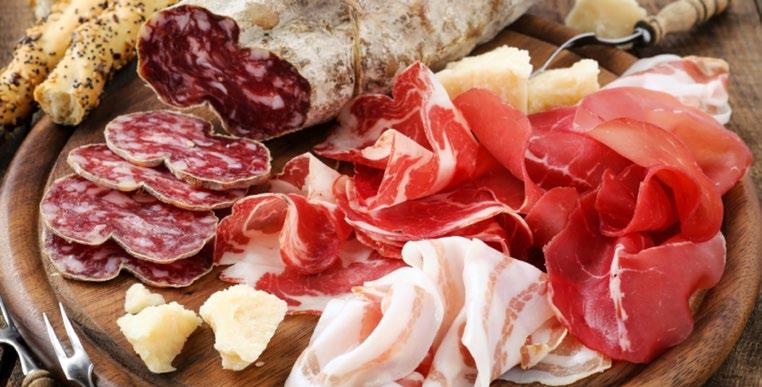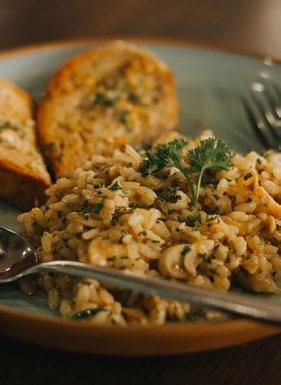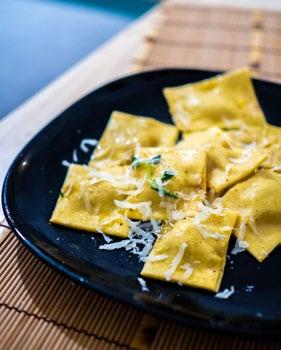
3 minute read
ITALIANS AT TABLE
Food is culture when it is produced, created, prepared, transformed, consumed and when it is chosen. Thus, it should not come as a surprise to discover that when the clock strikes eating time Italy, the country with the most UNESCO heritage in the world, the whole peninsula sits around the table with joy in their hearts and hunger in their stomachs. While people from all over the world have fostered their own recipes and traditions, some of them associated with specific meals (think of the Vietnamese bánh trung thu!), Italians developed a set of habits when it comes to eating. These range from behaviors and superstitions to even the order in which a certain meal should be eaten! Considering this, let’s dive into this Authentic Italian experience starting from the Table!

Uomo che mangia spaghetti
Renato Gattuso, 1956
Advertisement
First of all, bread shall be on the table. Not only bread itself is delicious, it is also the perfect way to check if the olive oil and the vinegar that will be present on the table. A mix of olive oil and vinegar is in fact called “pinzimonio” and it where your slice of bread should be dipped before having a taste of it! However, bread is not considered to be the first meal of a proper, Authentic Italian Table. It is the Antipasto, the Appetizer that has the honor of starting the eating. Often times, the antipasto may consist of a charcuterie platter such as salame, mortadella, or prosciutto, served with cheeses and bread; other times, you may find a cold salmon or tuna antipasto, or a bruschetta.

Cold cuts
After the Antipasto, the Primo is served. As the name suggests, meaning Primo literally “the first”, this is the first course to usually contain hot food and is often heavier than antipasto dishes. A Primo dish may contain fine and luxurious ingredients, such as truffle or seafood. Risotto, gnocchi, soup, lasagne, pasta, or broth are all common Primi.
The first is of course followed by “the second”, Secondo. In this course, you will encounter different meat and seafood options. Depending on the Italian region the menu is based on, you may have chicken, beef, pork, lamb, or turkey prepared in a variety of different ways, from a sausage to a roast to a grilled meat. In terms of seafood, you might find fish, shrimp, lobster, or some other kind of “meaty” seafood. If there are two dishes in the secondi, a sorbet palate cleanser is served between them. Alongside Secondo are sometimes served Contorni dishes, literally side dishes. Common ones are vegetable-based, whether raw or cooked. They are served on a different plate than the meat or seafood of the secondi, so as to not mix on a plate and allow for the preservation of the integrity of flavors.

Risotto with mushrooms, an example of first course
The whole set of meals is consumed while drinking wines, the choice of which will depend on the meal. While at this point you may fill satisfied and full with your meal, an Italian may say to you that, despite having his or her stomach full, there is always some place in there for the Dolce, the Dessert! Options range from tiramisu to cake or pie to panna cotta. You may also consider a sorbetto or gelato for something lighter and more palate-cleansing. In this occasion, you’ll have the chance to try a fresh Macedonia di frutta e gelato alla vaniglia, fruit salad and vanilla gelato!

“Panna cotta”, a typical dessert

Ravioli










